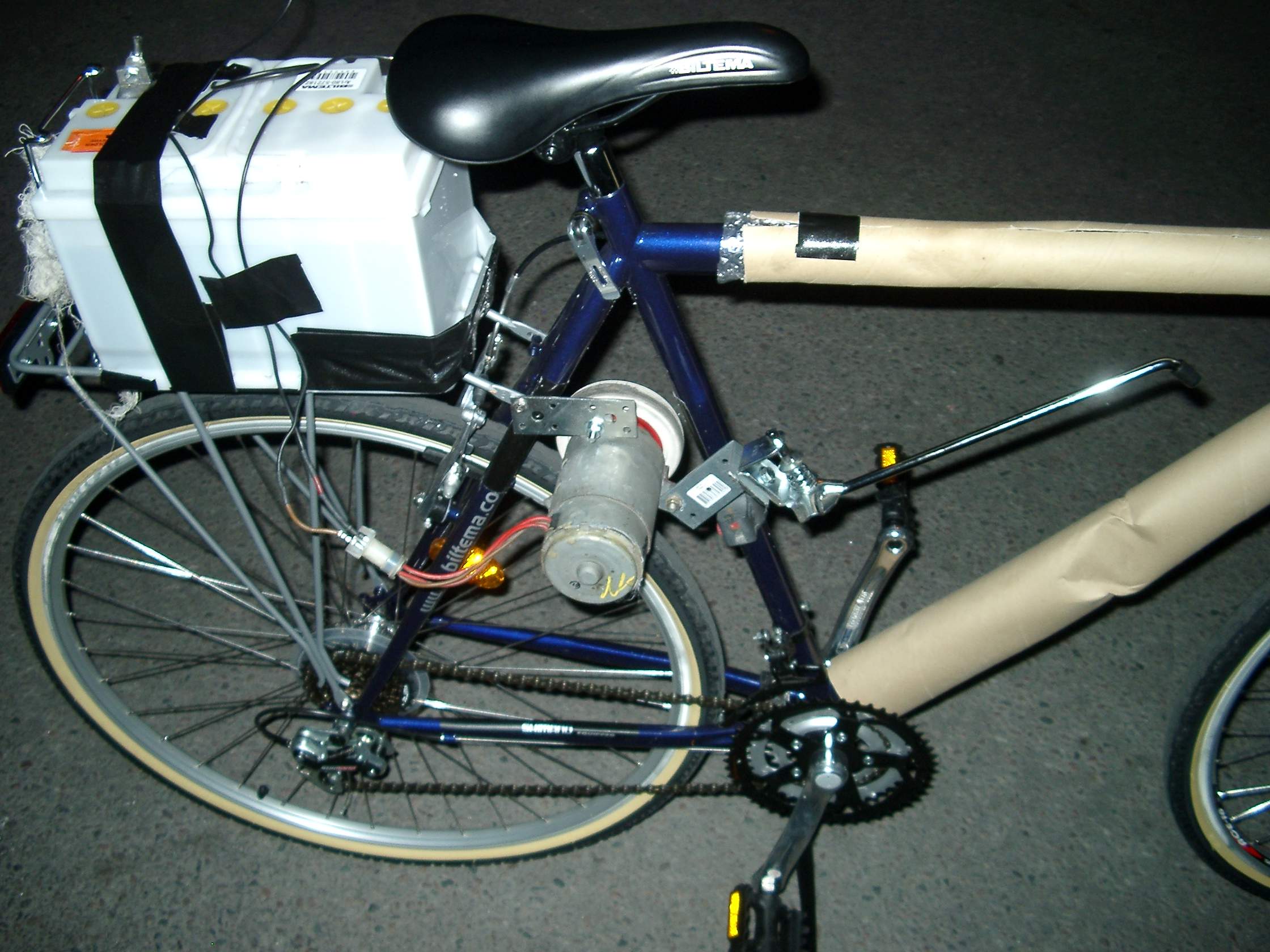



Background
This is the first step towards a low power transport vehicle.
A guess is that the average bicyclist delivers 150W of energy.
So I use a 200W 12V Radiator fan. rpm @ optimal load > 2500.
First I thought about using chains, but Simon suggested wheel to wheel.
Let's try to run 30 km/h: 30 km/h / 3.6 = 8.33 m/s
2500 rpm / 60 = 42 rps
8.33 m/s / 42 rps = 0.2 m circumference should the white-red wheel have.
0.2 / Pi = 6.3 cm in diametre.
I guessed maby the motor will turn much slower under load?
And I found a high friction rubber wheel with a diametre of 10 cm.
(10 cm equals 47 km/h, and later tests revealed it was a little to large)
A 60 Ah car-battery might give upp to 60*12/200 = 3.6 h of power cruising :-)
Construction
Cut the 10 cm wheel to fit the engine.
Made a hinge on the aft-side of the engine, and a long iron-stick
on the other side, to allow the driver to control the friction.
Taped the battery to the parcel carrier :-).
First ride
To my and Fredrik's big surprise, it started right of from standstill,
when we connected the wires and I pushed down on the lever.
I picked up more speed by every second, untill I was riding at between
20 to 30 km/h. (a guess).
Pretty Cool!
I took it for a spin around the block :-)
After first ride
As you can see, the 10 cm rubber-wheel shows severe wear.
I think this happened before take-off, spinning against the frame.
I think making a mechanical stop, that makes it impossible to lathe it against
the frame, and let the engine turn at "to low" rpm's during takeoff will solve this.
The wires got hot, have to get thicker ones
Thoughts for the Future
It is certainly possible to make good vehicles with similar technology.
I'd like to run this in a streamliner-body.
There is much much better engines out there, we have brushless RC-plane engines
which can deliver a lot of power e.g. 300, 500, 600, 1000, 2000 W.
They typically have 80% efficiency, and one claims 93%.
If we make our own controller, we can motor-brake and use the energy
to recharge the battery.
Gearbox / chains is the way to go.
Whatever that has the least amount of losses.
| Project Cost |
|---|
| Bicyckle | 1400 SEK |
| Engine | 300 SEK! |
| 60Ah Battery | 150 SEK! |
| 10cm wheel | 15 SEK |
| Cable | 30 SEK |
| Tape | 20 SEK |
| Sum: 1915 SEK (about 275 USD) |
|